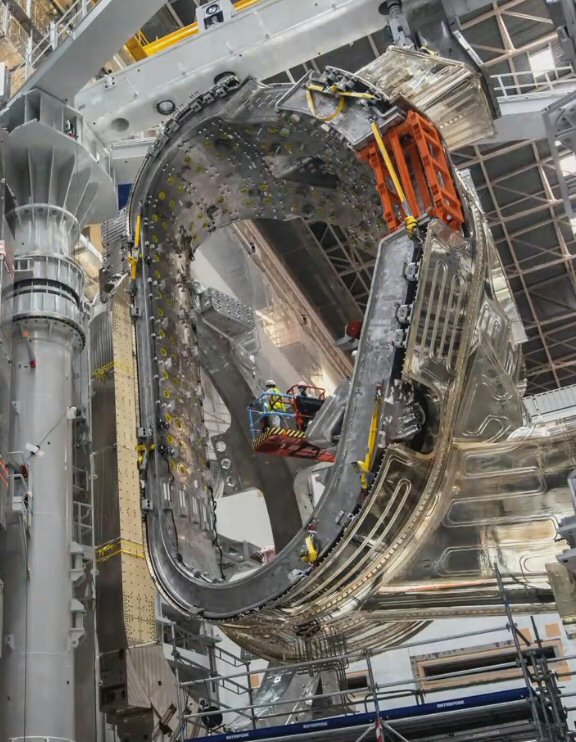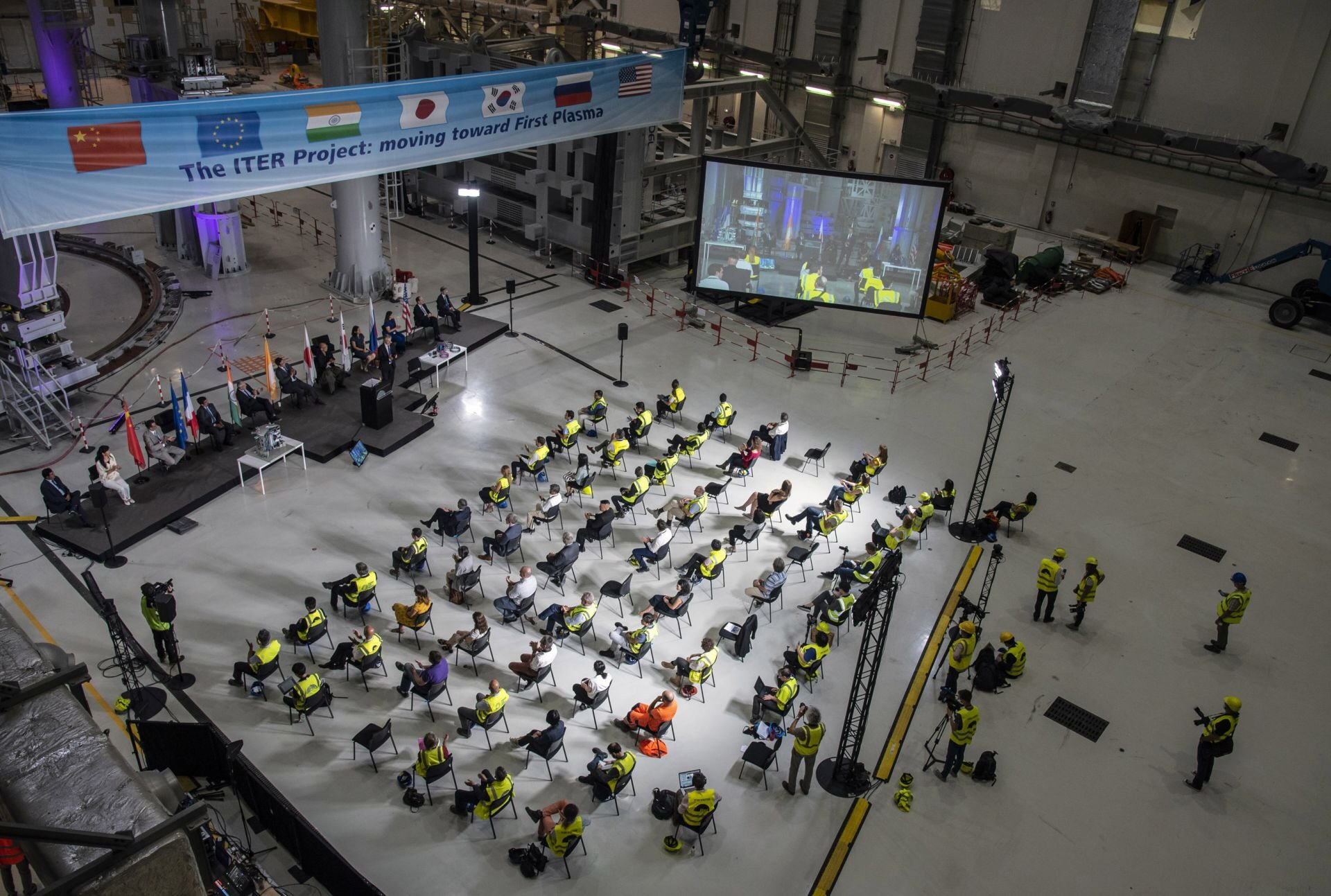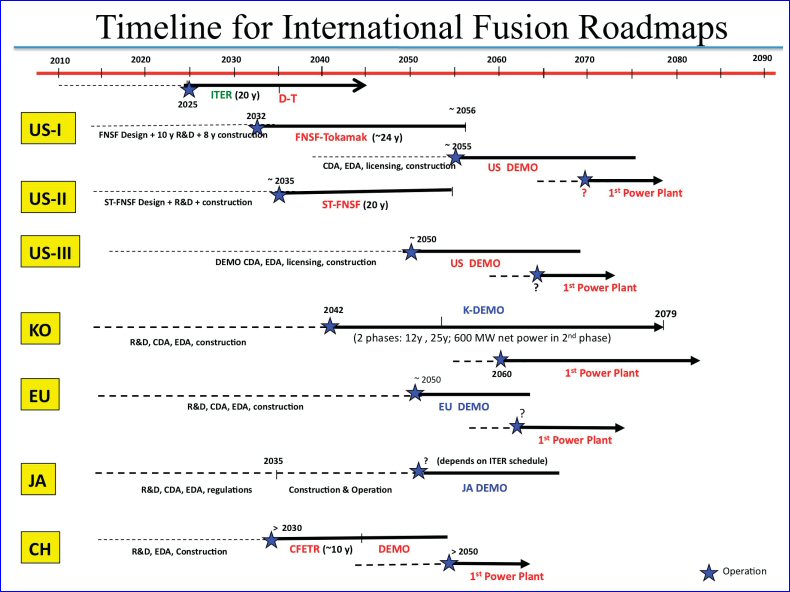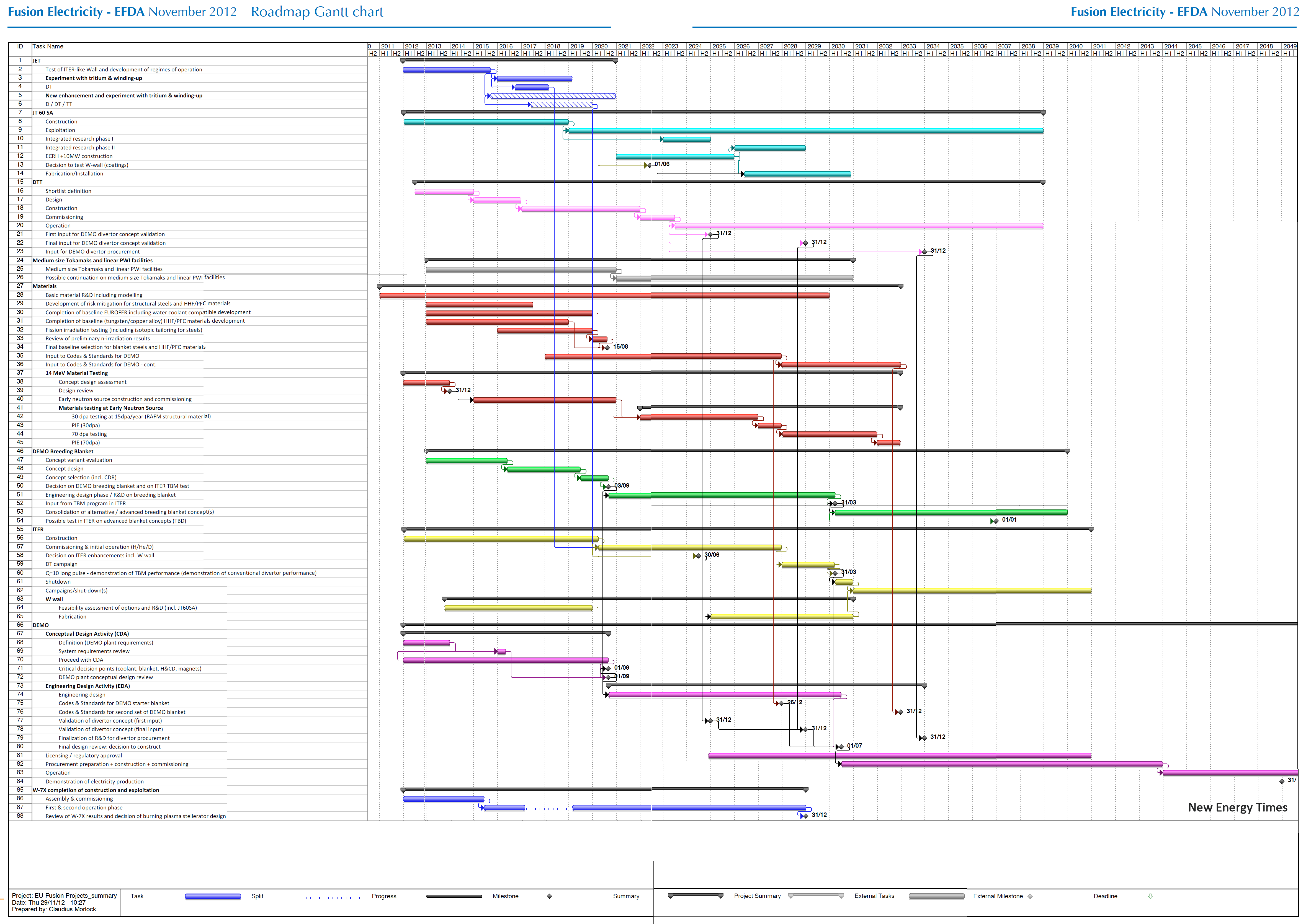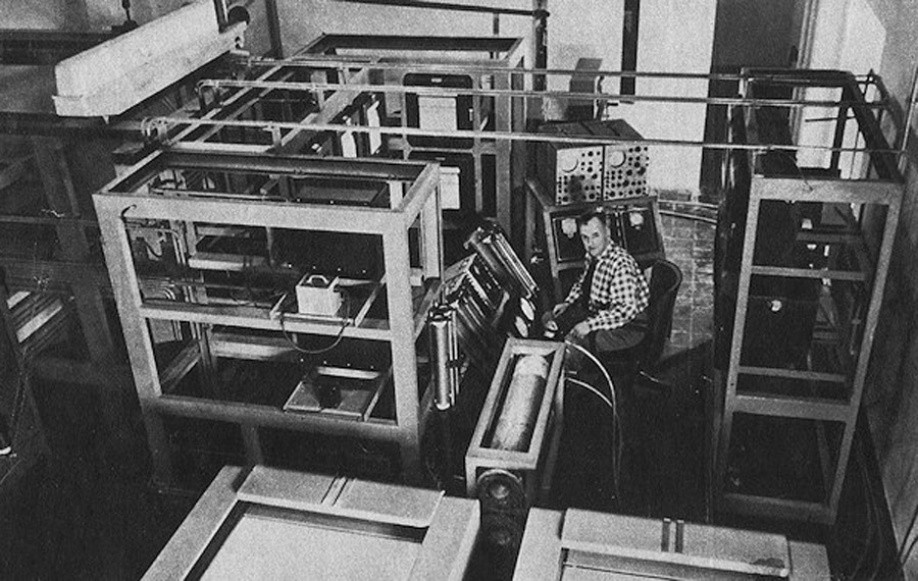
Ronald Richter working on the Huemul Project, the first fusion project that allegedly proved the feasibility of fusion. It was also the first fusion project identified as fraud.
By Daniel L. Jassby, Princeton Plasma Physics Lab (ret.)
April 27, 2022
Reprinted with permission from the American Physical Society Forum on Physics and Society April 2019 Newsletter, pp 13-16
“It is much easier to fool people than to convince them that they have been fooled.” – Mark Twain
Modern Fusion Fantasies
During the last decade a host of fusion energy “startups” have captured the attention of the technology press and blogosphere. These startups promise to develop practical fusion electric power generators in 5 to 15 years, and incidentally will achieve ITER’s planned performance in a fraction of the time at 1% of the cost. With few exceptions, journalists have accepted these claims without criticism and propagated them with enthusiasm.
But these projects are nothing more than modern-day versions of Ronald Richter’s arc discharges of 1948-54, the inaugural fusion energy brouhaha [1]. Just as Richter’s contraption could not generate a single fusion reaction, none of the current projects has given evidence of more than token fusion-neutron production, if any at all.
It was principally the absence of neutron emission that doomed claims of “cold fusion”, so why should more elaborate assemblies get a free pass, just because they use plasmas heated beyond room temperature? A tepid plasma of deuterium cannot produce measurable levels of fusion neutrons because one or more of the ion temperature, ion density, or plasma volume is too small. As far as energy production is concerned, such systems are the functional equivalent of “cold fusion” but cost orders of magnitude more.
Robert Park was the longtime director of the Washington office of the American Physical Society, and author of the book “Voodoo Science” [2]. In his book and numerous columns under the heading “What’s New,” Park demolished “cold fusion” but never mentioned any of the failed “warm plasma” fusion schemes of his era. Unlike “cold fusion,” plasma-based fusion attempts are generally not voodoo science but most of these enterprises can be classified as voodoo technology.
For present purposes, we define “voodoo fusion” as those plasma systems that have never produced any fusion neutrons, but whose promoters claim will put net electrical power on the grid or serve as a portable electric power generator within a decade or so. As in Richter’s pioneering fiasco, all the modern voodoo schemes offer perfect examples of one axiom of fusion energy R&D: The Inverse Timescale Axiom states that for any fusion concept, the smaller the achieved fusion neutron production, the shorter the predicted time to a working power reactor.
The total absence of any fusion neutron production has an inexplicable psychological effect: It encourages both promoters to predict and onlookers to believe that tinkering with a tepid plasma can result in commercial fusion electric power generators within a decade.
Voodoo incantations are necessary both to induce a trance in journalists, investors and politicians in order to procure financing, and eventually to command the fusion neutrons to materialize by witchcraft as those neutrons cannot be produced by the touted plasma concepts. Today the messianic incantations of the voodoo priest-promoters invoke the aura of “the energy source that powers the sun and stars” as well as the myth that terrestrial fusion energy is “clean and green” in order to cast a spell over credulous investors and politicians.
Fusion Neutrons are Critical
Unlike solar fusion reactions that produce no neutrons, in the most favored Earth-bound fusion reaction (deuterium-tritium), 80% of the energy is released in streams of high-energy neutrons. Because of the difficulty in handling radioactive tritium, experimenters commonly use deuterium alone, and 50% of D-D reactions produce high-energy neutrons. Some enterprises propose to use the neutron-free D-3He reaction, but neutrons are still produced in unavoidable D-D reactions. In all cases, no neutrons means no fusion. Finally, some ventures propose to use the aneutronic proton-boron reaction, but the only convincing way to discern progress in reaching reactor conditions is by doping the plasma with deuterium and measuring D-D neutron output.
Numerous fusion “startups” promise a practical fusion reactor delivering net electric power in 5 to 10 years, but almost all have apparently never produced a single D-D fusion reaction. The currently most notorious (in alphabetical order) are General Fusion [3], Helion Energy [4], Lockheed-Martin Compact Fusion [5], and Tri-Alpha Energy [6], all of which have made that promise for the last 5 to 15 years.
For reference, one watt of D-D fusion power is accompanied by approximately one trillion neutrons per second. Fusion concepts that can attain some level of fusion activity include many tokamaks in numerous labs worldwide, a few stellarators, laser-compressed pellets at Livermore (NIF) and the University of Rochester, MagLIF at Sandia, electrostatic fusors, and the dense plasma focus (DPF). Neutron production by itself has various practical uses such as isotope production and radiography [7]. More than 90% of fusion concepts have never produced measurable levels of fusion neutrons, which means those systems may have little practical value.
This discussion excludes Tokamak Energy and Commonwealth Fusion from the voodoo class despite their preposterous and insupportable declarations of near-term electrical power production [8], solely because their schemes are based on tokamaks. For 50 years many tokamak facilities have demonstrated that they are capable of producing a significant level of D-D fusion reactions, increasing from 1xE8 n/s in T-3 in 1969 to more than 2xE16 n/s in TFTR in 1988 [9] and comparable rates years later in JET and DIII-D [10]. We also exclude LPP Fusion, because its DPF does produce meaningful levels of D-D fusion neutrons (3xE11 n/pulse), as the DPF has done since the 1960’s.
Naked Emperors Flaunt Their New(tronless) Clothes
One sketchy way to track the predicted dates for each player’s commercial power plant is to review the articles issued periodically by Brian Wang on nextbigfuture.com [11]. For the last dozen years, Wang has quoted uncritically the rash predictions of future accomplishments with dates furnished by project promoters. Wang treats all projects and unjustified claims seriously, but you, dear reader, will merely take note of the dates promised for commercial fusion reactors.
Here are samples of the more recent predictions for energy breakeven and commercial power plants from the currently most notorious voodoo fusion enterprises. The symbol NBF denotes the website nextbigfuture.com.
General Fusion (GF)
“GF targets prototype by 2015 and a working reactor by 2020,” from NBF 5/19/2012.
“GF will demonstrate DD-equiv. net (energy) gain in 2016,” and “GF targeting commercial reactor for 2020,” from NBF 5/24/2013.
GF will demonstrate net gain in 2018 and “GF targeting commercial reactor for 2023,” from NBF 8/18/2015.
“GF Demo nuclear fusion plant around 2023”, quoting C. Mowry, CEO of GF, from NBF 5/23/2018.
Helion Energy
“The Helion Fusion Engine will enable profitable fusion energy in 2019,” from NBF 7/18/2014.
“If our physics holds, we hope to reach that goal (net energy gain) in the next three years,” D. Kirtley, CEO of Helion, told The Wall Street Journal in 2014.
“Helion will demonstrate net energy gain within 24 months, and 50-MWe pilot plant by 2019,” from NBF 8/18/2015.
“Helion will attain net energy output within a couple of years and commercial power in 6 years,” Science News 1/27/2016.
“Helion plans to reach breakeven energy generation in less than three years, nearly ten times faster than ITER,” from NBF 10/1/2018.
Lockheed-Martin Compact Fusion
“Lockheed will have a small fusion reactor prototype (power plant) in five years…and a commercial application within a decade,” from MIT Technology Review, 10/20/2014.
“Net energy gain in 2020 and commercial power plant targeted for 2024,” from NBF May 3, 2016.
Tri-Alpha Energy (now TAE Technologies)
“Tri Alpha says it will produce a working commercial reactor between 2015 and 2020,” from NBF 8/16/2011.
“Tri Alpha Energy now likely 2020 – 2025….. for commercial nuclear fusion,” from NBF 10/16/2015.
“Tri-Alpha Fusion to develop commercial fusion by 2027,” from NBF 1/19/2017.
”The company will generate net energy from fusion…. in about five or six years,” from K. Bourzac [8], 8/6/2018.
Another collection of postings describing plasma fantasies masquerading as practical energy sources along with projected commercialization dates can be found on The Polywell Blog [12], maintained by Matthew Moynihan.
There are also numerous wannabe fusion contenders that have popped up in the last 5 years or so, making the usual preposterous claims on the basis of nothing but hot air or cold plasma, but these outfits are not yet sufficiently well-known to warrant more than a mention. Examples are Dynomak, First Light, HyperJet, and numerous members of the delusional Fusion Industry Association.
Journalists and promoters rarely mention neutrons, because most journalists have never heard of them, while the promoters assume that neutrons can eventually be made to issue from their contraptions by the appropriate voodoo recitation. Wang and Moynihan, who monitor all relevant press releases, have probably heard of fusion neutrons but they care not a whit about their absence — in their eyes any gaseous plasma is the basis of a working fusion reactor simply because its promoters claim that it is. But you, dear reader, will actually search for reports of fusion neutron production and you will find essentially nothing!
The permanent fusion R&D organizations, mainly government-supported labs, are the silent spectators of the parade of naked emperors, only occasionally challenging their insupportable assertions and predictions. One feature that voodoo fusion schemes do share with their neutron-producing rivals is that while they will never put electricity onto the grid, all of them take plenty of energy from the grid. The voracious consumption of electricity is an inescapable feature of all terrestrial fusion schemes.
In January 2019, well after this article was first submitted, TAE Technologies reported achieving a token fusion reaction rate [13]. TAE Tech’s experiments with deuterium plasmas have produced a maximum of 5E9 n/s (~5 milliwatts fusion) in a 5 ms pulse amounting to about 2E7 D-D neutrons per pulse, with the injection of at least 5 MW of neutral beams and tens of MW total electric power consumption. [Ed: the fusion reaction produced an output of 0.005 Watts from an input of tens of millions of Watts of electricity.]
As noted above, the Dense Plasma Focus at LPP has produced a D-D neutron yield per pulse that’s 10,000 times larger than TAE’s best, while the TFTR, JET and DIII-D tokamaks have produced D-D neutron rates that are 10 million times larger.
Despite TAE Tech’s device producing fusion power that’s at least nine orders of magnitude smaller than its electric power consumption, TAE Tech has just issued its most outlandish claim ever. That’s described by Brian Wang in “nextbigfuture.com” (16 Jan. 2019) under the headline “CEO of TAE Technologies Says They Will Begin Commercialization of Fusion by 2023.”
A Cousinly Voodoo Plasma Enterprise
So how will these ballyhooed boondoggles end up? For guidance let’s look at the fate of a notorious voodoo technology enterprise in the field of medical diagnostics. Theranos (a contraction of THERApy diagNOSis) is a California-based company that purported to have a revolutionary blood-testing system, garnered nearly a billion dollars of investment, and stacked big names on its Board of Directors. The company’s claim is that with only a tiny drop of blood it could run hundreds of tests and detect diseases in their early stages. Over the past few years it was exposed as a total sham, principally by the investigative work of John Carreyrou, which culminated in his book “Bad Blood” [14].
Theranos and fusion energy enterprises are both centered on fluids called “plasma,” liquid in the case of Theranos, and gaseous for the others. But Theranos and the so-called fusion energy startups have a lot more in common than the name of their working fluid. It’s striking how the characteristics of the Theranos undertaking are similar to those of the phantom fusion enterprises that promise a practical fusion reactor delivering substantial net electric power in 5 to 10 years, but have never produced more than a token amount of D-D fusion reactions, if any at all.
Here are some of the features of the Theranos sensation, derived from Carreyrou’s book and published interviews with Carreyrou [14]. The voodoo fusion analogs are in parentheses.
- Holmes preached that the Theranos device was “the most important thing that humanity has ever built.” (That’s the same refrain made by fusion technologists about their beloved contraptions.)
- Theranos’s technology was either not ready or unworkable during the initial period of bombast, and when put into service was never validated. (Today’s much-heralded voodoo fusion equipment can produce only token fusion neutrons, if any, and to the end of time will be capable only of phantom energy production.)
- Holmes beguiled high-profile people to serve as directors or investors. They ignored or could not recognize all indications that they were being fooled. (Trusting billionaires and celebrities serve as investors or board members in General Fusion, Helion, TAE Tech., etc.)
- Holmes’ game was always that the ends justify the means. She thought the technology would eventually catch up with all the promises she made, and practiced “fake it till you make it.” (Fusion promoters assume that high-energy neutrons will magically show up someday in the abundance needed for promised electricity generation.)
The founders and chief executives of General Fusion, Helion Energy, Lockheed Fusion and Tri-Alpha are reincarnations of Ronald Richter, the first practitioner of voodoo fusion energy. Like Theranos’s Elizabeth Holmes, these modern priests of voodoo fusion have cast a spell over most journalists, investors and politicians.
The pinpricks of blood plasma extracted by Theranos could not produce enough usable data for meaningful tests. It was voodoo diagnosis. Similarly, the tepid plasmas of the voodoo fusioneers can never produce enough fusion neutrons, if any at all, to have practical use. Very recently, Theranos announced that it would dissolve and its investors will receive at most one cent on the dollar. At best, that same outcome awaits the voodoo fusion ventures when it becomes apparent that their power plant foolishness, fantasies and deception have zero factual basis. And at worst? Follow the Theranos case.
References
- Jose A. Balseiro, “Report on the September 1952 Inspection of the Isla Huemul Project,” Comisión Nacional de Energía Atómica, Buenos Aires, Argentina (1988); M. A. J. Mariscotti, “El Secreto Atómico de Huemul,” Sudamericana-Planeta, Buenos Aires, Argentina (1985); many references in Wikipedia entry for “Huemul Project.”
- Robert L. Park, “Voodoo Science,” Oxford Univ. Press, 2000.
- General Fusion website http://www.generalfusion.com/
- Helion Energy website http://www.helionenergy.com/
- Lockheed Martin website http://www.lockheedmartin.com/us/products/compact-fusion.html
- TAE Technologies (Tri-Alpha Energy) website http://www.tae.com/
- APS Panel on Public Affairs Report, “Neutrons for the Nation,” Amer. Physical Soc., July 2018.
- D. Kramer, Physics Today, August 2018, p. 25; K. Bourzac, Chemical & Engin. News (ACS), August 6, 2018.
- M.B. Bell et al. (TFTR results), Proc. IAEA Fusion Energy Conf. (Nice, 1988), Vol 1, p. 27.
- P.B. Snyder et al. (DIII-D results); H-T Kim et al. (JET results); both presented at 27th IAEA Fusion Energy Conf. (India, 2018)
- Brian Wang, www.nextbigfuture.com
- Matthew Moynihan, www.thepolywellblog.com
- R. M. Magee, et al, Nature Physics, publ. online, 14 Jan. 2019.
- John Carreyrou, “Bad Blood,” Alfred Knopf, 2018; book review by R. Lowenstein, New York Times, May 21, 2018; interview of Carreyrou by Vox, June 19, 2018
Appendix
Neutron Distractions
- Some years ago when “sonofusion” was a short-lived obsession, General Fusion applied an electrically driven shock wave to a sphere of deuterated water and claimed to have produced up to 50,000 neutrons per shot. That was never confirmed and in any case has nothing to do with the company’s fusion reactor concept.
- TAE Technologies is pursuing another venture that uses ion beams striking solid targets to produce neutrons for cancer therapy. This technique is real, having been pioneered by cyclotron inventor Ernest Lawrence and his physician brother in 1938 and used for eight decades.


